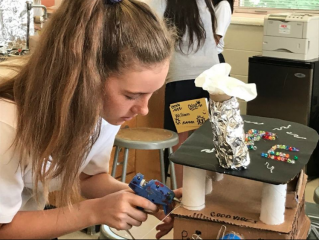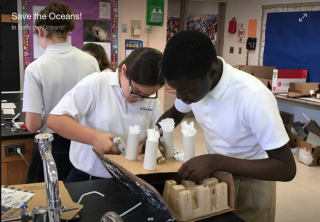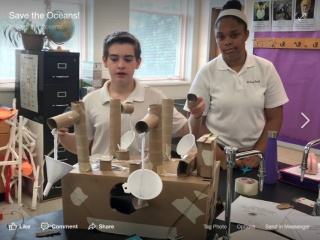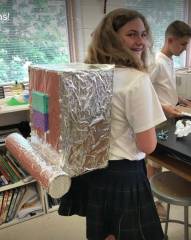Save the Oceans!
What happens to all of the plastic that you throw away each day? Sadly, much of it ends up in our oceans. There are an estimated 5.25 trillion pieces of plastic debris in the ocean, and of that mass, 269,000 tons float on the surface, while some four billion plastic microfibers per square kilometer litter the deep sea. This trash is negatively affecting ocean life and ultimately reaches the human food chain.
Mrs. Yuska’s Seventh Grade Science class took up the challenge of looking for solutions to this pollution problem. The students worked in groups to research the answers to the following questions: What negative effect do humans have on the Earth's oceans? What impact does trash play on the ocean ecosystems? What responsibility do humans have with regards to trash and the Earth's oceans?
After understanding the problem, students were given guidelines on developing a device to remove this trash, including that it must not be harmful to marine life, must be scalable and sustainable.
Although the prototype devices were constructed from cardboard and were not actually deployed to the ocean, one of the fundamental purposes of STEM education is to teach the skills that are necessary for effective problem solving. We teach students how to think critically about a problem and how to work collaboratively to develop solutions.








